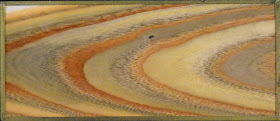 Natural history in the nineteenth century strove to describe and classify everything in the living world. Museums were bulging at the seams with specimens and catalogs listing and illustrating classes of life proliferated. For some in the field, traditional illustration techniques were frustratingly inadequate for the level of precision and detail they were after: they wanted to show nature in all of her wonder. We have written before of one obsessive attempt to bring nature into book form with As Nature Shows Them: Moths and Butterflies of the United States which used the cells from butterfly wings to color the images.
Natural history in the nineteenth century strove to describe and classify everything in the living world. Museums were bulging at the seams with specimens and catalogs listing and illustrating classes of life proliferated. For some in the field, traditional illustration techniques were frustratingly inadequate for the level of precision and detail they were after: they wanted to show nature in all of her wonder. We have written before of one obsessive attempt to bring nature into book form with As Nature Shows Them: Moths and Butterflies of the United States which used the cells from butterfly wings to color the images.We recently acquired a similarly passionate quest for botanical realism: Thomas Moore's The Ferns of Great Britain and Ireland (London: Bradbury and Evans, 1855). The book employs a process dubbed "Nature Printing" that involved pressing an actual fern into soft lead then electoplating the impression to create an intaglio printing plate. The fern itself created the illustration and the effect is stunning. The book appears to be a collection of actual fern pressed into paper, but with colors that have not faded.
 Another book in the collection takes this hyper-realism even further. Romeyn Hough's The American Woods, Exhibited by Actual Specimens and with Copious Explanatory Notes (Lowville: By the Author, 1888-1904) uses 750 paper-thin wood samples carefully mounted in cardboard cards to show the wood grains of hundreds of native trees.
Another book in the collection takes this hyper-realism even further. Romeyn Hough's The American Woods, Exhibited by Actual Specimens and with Copious Explanatory Notes (Lowville: By the Author, 1888-1904) uses 750 paper-thin wood samples carefully mounted in cardboard cards to show the wood grains of hundreds of native trees. To see a little nature in Rauner, ask for Rare QK527.M8 1855 and Rare SD536.H83.

No comments:
Post a Comment